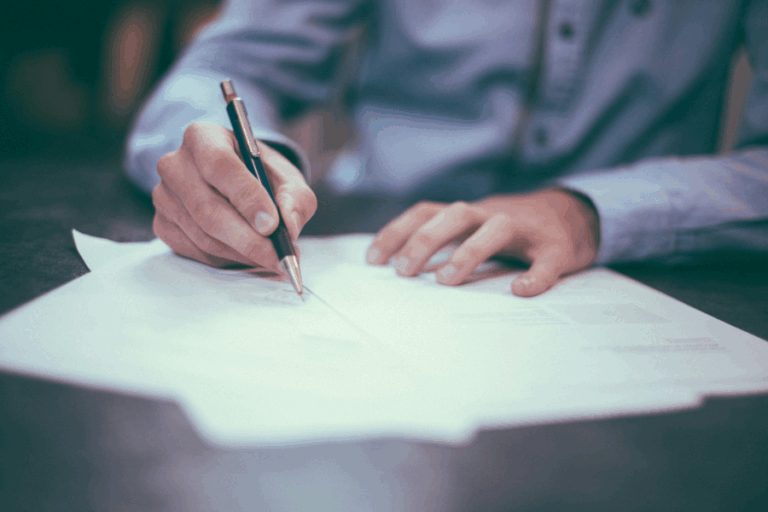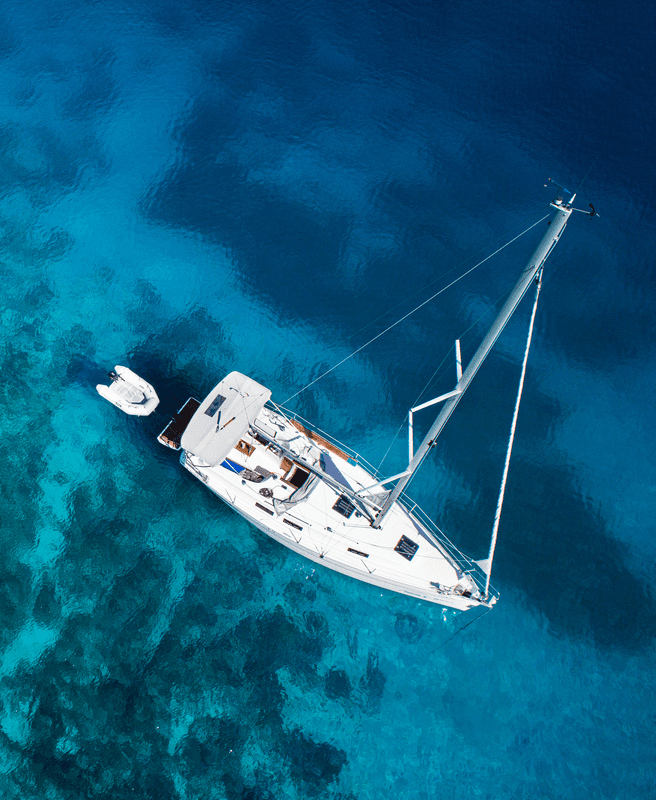The 5 Safest Banks in the United States
February 28, 2025
There’s a misguided assumption that banking in the US must be safe.
After all, it’s the world’s largest economy, which means the banks must be of the highest tier, right?
However, the recent failure of several US banks shows that this impression is not necessarily accurate.
In fact, the US has had more bank failures than almost any other developed country in the world. Banking here is not as safe as you might think. Although, there are a few exceptions to this rule.
This article explores the US banks that experts consider to be the safest. If protecting your assets is something you’d like to accomplish, find out how we can help here.
Recent US Bank Collapses
At the height of the 2008 global recession, US banks were the 40th safest in the world and, honestly, haven’t recovered as well as you would expect.
In 2023, the FDIC reported five worldwide bank failures – they included the collapse of First Republic Bank, Silicon Valley Bank and Signature Bank – the second, third and fourth-largest bank failures in the history of the US.
Then came two US bank failures in 2024 (The First National Bank of Lindsay and the Republic First Bank dba Republic Bank). These were followed just one month into 2025 by another US bank collapse (Pulaski Savings Bank).
This is exactly why it’s so important to understand the concept of legal offshore banking.
Still, there are good reasons why you may choose to hold your money in a US bank. At Nomad Capitalist, we frequently help people who own multinational businesses that necessitate a US bank account.
Expanding an e-commerce project to the US or opening a store on Amazon are just two of the reasons you may need to open a US bank account. If you’re a Nomad Capitalist about to travel long term, you might be looking for a safe place to park your money while you’re out of the country.
While travelling, you don’t want to be concerned about the safety of your money, so picking a stable bank is key. You’ll also need a bank that can easily wire transfer money to international bank accounts, making choosing a bank before you leave even more complicated.
In a moment, we’ll share the five safest banks in the United States, as reported by experts. But first, a few definitions.
What Do We Mean by Safe?
When compiling this list, we analysed a number of different factors and reports from third-party institutions.
In the US, one of the first things you’ll want to make sure of is that a bank is FDIC-insured. This is insurance from the Federal Deposit Insurance Corporation that protects depositors.
If the bank goes under while you have money in an account, the US government will insure up to US$250,000.
Most, but not all, US banks are FDIC-insured. If you’re looking to put more than the FDIC-covered amount into an American bank account, you’re going to have to open accounts with multiple banks to ensure all of your money is protected. And yes, FDIC covers non-citizens and even non-residents.
Of course, it’s better to avoid this possibility altogether by choosing the safest bank in the first place.
Data on US bank safety is not widely available. If you call a bank and start asking questions, they’ll probably get suspicious and tell you they can only give out information to customers.
Turning to international organisations for information and crunching your own numbers can help you make an educated decision on where to keep your money.
Global Finance’s list of safest banks in the world is one of the easiest tools for Nomad Capitalists to analyse.
One factor Global Finance takes into account when devising its list is asset size. Banks with larger assets are generally able to recover from losses on defaulted loans more easily.
‘Too Big To Fail’
Applying this principle, people have assumed that the largest banks were ‘too big to fail’. The financial crisis showed that isn’t necessarily true, although in the US, the biggest banks were bailed out by the government.
Dividing a bank’s bad assets by the assets available to compensate for the losses, called the Texas ratio, is a quick and easy way to calculate a bank’s safety yourself. The lower the ratio, the safer the bank is for holding your money.
The International Monetary Fund (IMF) uses three main factors to determine a bank’s vulnerability:
- A large proportion of short-term funding (i.e. checking accounts) when compared to total deposits.
- A low ratio of cash to assets
- A low ratio of capital to assets.
The IMF considers a large proportion of short-term funding to be dangerous because it can easily be recalled by customers.
If news breaks that a bank is facing financial difficulties, customers will often rush to withdraw their funds.
Since short-term funding is used to finance long-term loans, which cannot be quickly converted to cash, such a run on a bank’s assets can threaten its stability.
Global Finance also takes into account the foreign currency deposit ratings issued by the three major credit rating agencies. Foreign currency ratings reflect a bank’s ability to meet financial obligations denominated in foreign currency.
This metric is important because it considers the probability of the government imposing restrictions on currency conversions and the transferring of funds in a foreign currency. As a Nomad Capitalist, you’re going to want to pay close attention to a bank’s foreign currency deposit rating.
In practical terms, while travelling, you may end up using suspect Wi-Fi and ATMs, putting you at risk of fraud, as well as credit card and identity theft. In some parts of the world, armed robbery is a distinct possibility.
When deciding where to keep your money, make sure the bank has an excellent fraud alert system that will cover your losses if your card is lost, stolen or cloned.
Credit Unions vs. Banks
Credit unions can sometimes be a safer option while offering higher interest rates on deposits, more affordable loans and better customer service.
Credit unions may have plenty of benefits, but they’re not always as accommodating to international citizens because they tend to provide highly localised services.
For example, some credit unions don’t even have the capability to wire money internationally. If you’re moving to the US and looking for a safe place to host your money, a credit union can be a good option, but if you’re a full-time traveller, a small credit union might not be practical.
As is the case with banks, up to US$250,000 in an account with an insured credit union is covered by the federal government. Credit unions are insured by the National Credit Union Administration (NCUA) rather than the FDIC.
Banking for Nomads
After moving abroad, one of the first things you’ll learn is that dealing with your bank at home can be a challenge.
Dealing with unforeseen events, like fraudulent charges appearing on a card, or even everyday matters, like paying bills, can be a source of ongoing stress.
If you’re planning on leaving your money in a US bank while you travel or live internationally, you have to consider how your lifestyle change will impact your banking needs. Choosing a bank poorly suited for nomads can add a number of perils and annoyances to your daily life.
Here are a few things to consider when choosing a US bank besides safety:
- International wire transfers
- Ability to report fraud online
- 24/7 customer service
- Reliable online banking.
Many new nomads don’t bother to do research on the most internationally friendly and secure banks before leaving the country and end up suffering the consequences.
The Five Safest Banks in the US
So, here’s the list of what Global Finance considers the five safest banks in the US.
1. Agribank
Agribank holds US$176.4 billion worth of assets, so clearly, it’s a well-used institution. Although, as the name suggests, it’s a specialised bank focused on agriculture.
Agribank exclusively serves the 15 Midwestern states. Because of the highly localised nature of its business, it does not provide international transfers. Fraud can’t be easily reported, and Agribank does not offer a 24/7 helpline or online platform.
Unless you’re a large-scale farmer, rancher or otherwise involved in agribusiness, Agribank is not for you. Agribank is a part of the US Farm Credit System and only acts as a wholesale lender.
2. CoBank
CoBank is also part of the US Farm Credit System. As an agricultural credit bank, CoBank provides direct retail and wholesale loans to farmers and those involved in agribusiness in 23 states.
The latest figures indicate that CoBank holds assets totalling US$199 billion.
Fraud can only be reported via a telephone hotline, but it does not provide a 24/7 hotline service, which will complicate working with your bank when you’re in a different time zone.
CoBank does offer international wire transfers, but it is certainly not the friendliest bank for international travellers.
3. AgFirst
AgFirst is yet another farm credit bank. Like Agribank, AgFirst is a wholesale-only lender, reporting assets of US$46 billion in 2024.
Like most farm credit banks, the operations of AgFirst are highly localised, only serving 15 Eastern states and Puerto Rico while not providing many of the services needed for nomads.
AgFirst provides an online banking platform for managing loans on your computer, tablet, or smartphone.
AgFirst places a firm emphasis on cybersecurity, adhering to the latest cybersecurity standards and utilising a multifaceted defence strategy for protecting information.
4. Farm Credit Bank of Texas
Like Agribank, Farm Credit Bank of Texas (FCBT) is a wholesale lender serving the agribusiness industry.
FCBT is a smaller, local bank holding US$38.9 billion in total assets. It serves large, complex agribusiness operations, which are related mostly to food and rural utility, so it is not exactly the best choice for nomad capitalists.
5. Bank of New York Mellon
The Bank of New York Mellon, commonly known as BNY Mellon, was founded in 2007 following the merger of The Bank of New York and Mellon Financial. It holds more than US$50 trillion worth of assets, according to its website, and serves the whole of the United States.
BNY Mellon offers international wire transfers and plenty of useful online banking features.
Safest Banks in the United States: FAQs
Five major US banks failed in 2023, and there is no US bank rated in the top 40 on Global Finance magazine’s list of the safest banks. In global terms, US banking is not the safest.
Five US banks failed in 2023, two in 2024 and one so far in 2025, so there’s certainly a possibility that more will follow.
The Federal Deposit Insurance Corporation (FDIC) provides deposit insurance to all banking customers in the US in the case of bank failure, up to a maximum of US$250,000 per customer.
JPMorgan Chase, Bank of America, Wells Fargo and Citigroup are known as the ‘big four’ banks in the United States.
Republic Bank and The First National Bank of Lindsay are two US banks that failed in 2024.
There are various considerations to weigh up when looking at offshore banking safety. If you’re interested in offshore banking, like most things in the offshore industry, the answer depends on what you need and what your goals are.
The Nomad Capitalist guide to opening an offshore bank account will clarify all the steps needed.
Don’t Trust US Banks Blindly
After analysing the data on bank safety in the US, two things become clear.
Firstly, there’s a woeful lack of information on bank safety available to the public, which is probably why people tend to choose the largest banks rather than the safest. Customers are then shocked when institutions that seem ‘too big to fail’ face financial difficulties or even have to close their doors.
Secondly, most of the banks that made this list are relatively small or localised, not exactly the best options for expats and digital nomads. Don’t fall into the trap of trusting a bank just because of its size; we now know better than that.
Choosing a smaller, safer bank or credit union can work in some circumstances. Just make sure they’re equipped to deal with international travel and are not going to slam you with ridiculous fees for international transfers.
Otherwise, if you want to live an international lifestyle, the lack of safe banks in the US could cause you to focus exclusively on offshore banking options.
Before you open a bank account in the US, do your due diligence and consider spreading your funds between different banks if need be. Or, look beyond American shores for good offshore banks.
At Nomad Capitalist, we help wealthy investors and entrepreneurs to ‘go where they’re treated best’, whether that’s by moving their investments overseas, gaining a second citizenship or moving to a tax-friendly country.



Property Taxes in Portugal: Annual Rates and Rules for Expats
Purchasing property in Portugal is often a more affordable investment than buying real estate in countries like the U.S., making it an attractive option for expats. However, real estate owners are subject to different tax rates depending on the property’s value and its intended purpose. To help you understand property taxes in Portugal, this guide […]
Read more

An Expat’s Guide to Portugal Tax Residency
Relocation to Portugal can change your tax circumstances significantly if you decide to become the country’s resident. Familiarizing yourself with the rights and obligations of Portugal tax residency before relocating can help you weigh your options and plan accordingly. This guide will cover the most important aspects of Portugal tax residency, specifically: When Do You […]
Read more

Does Puerto Rico Pay Taxes to the US?
It’s a common question and one that often fuels confusion, debate, and a fair share of misinformation – Do residents of Puerto Rico actually pay US federal taxes? When most people think of US tax obligations, they naturally assume they apply uniformly across all US citizens. But when it comes to Puerto Rico, things are […]
Read more




